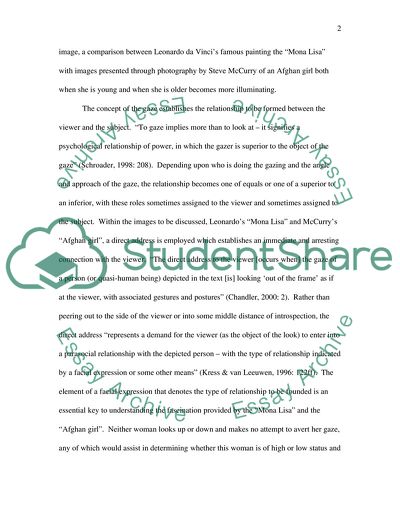Cite this document
(The Modern Mona Lisa Essay Example | Topics and Well Written Essays - 5000 words, n.d.)
The Modern Mona Lisa Essay Example | Topics and Well Written Essays - 5000 words. Retrieved from https://studentshare.org/visual-arts-film-studies/1710592-compare-and-contrast-the-mona-lisa-and-steve-mc-currys-famous-photo-of-the-afghan-girl
The Modern Mona Lisa Essay Example | Topics and Well Written Essays - 5000 words. Retrieved from https://studentshare.org/visual-arts-film-studies/1710592-compare-and-contrast-the-mona-lisa-and-steve-mc-currys-famous-photo-of-the-afghan-girl
(The Modern Mona Lisa Essay Example | Topics and Well Written Essays - 5000 Words)
The Modern Mona Lisa Essay Example | Topics and Well Written Essays - 5000 Words. https://studentshare.org/visual-arts-film-studies/1710592-compare-and-contrast-the-mona-lisa-and-steve-mc-currys-famous-photo-of-the-afghan-girl.
The Modern Mona Lisa Essay Example | Topics and Well Written Essays - 5000 Words. https://studentshare.org/visual-arts-film-studies/1710592-compare-and-contrast-the-mona-lisa-and-steve-mc-currys-famous-photo-of-the-afghan-girl.
“The Modern Mona Lisa Essay Example | Topics and Well Written Essays - 5000 Words”, n.d. https://studentshare.org/visual-arts-film-studies/1710592-compare-and-contrast-the-mona-lisa-and-steve-mc-currys-famous-photo-of-the-afghan-girl.


